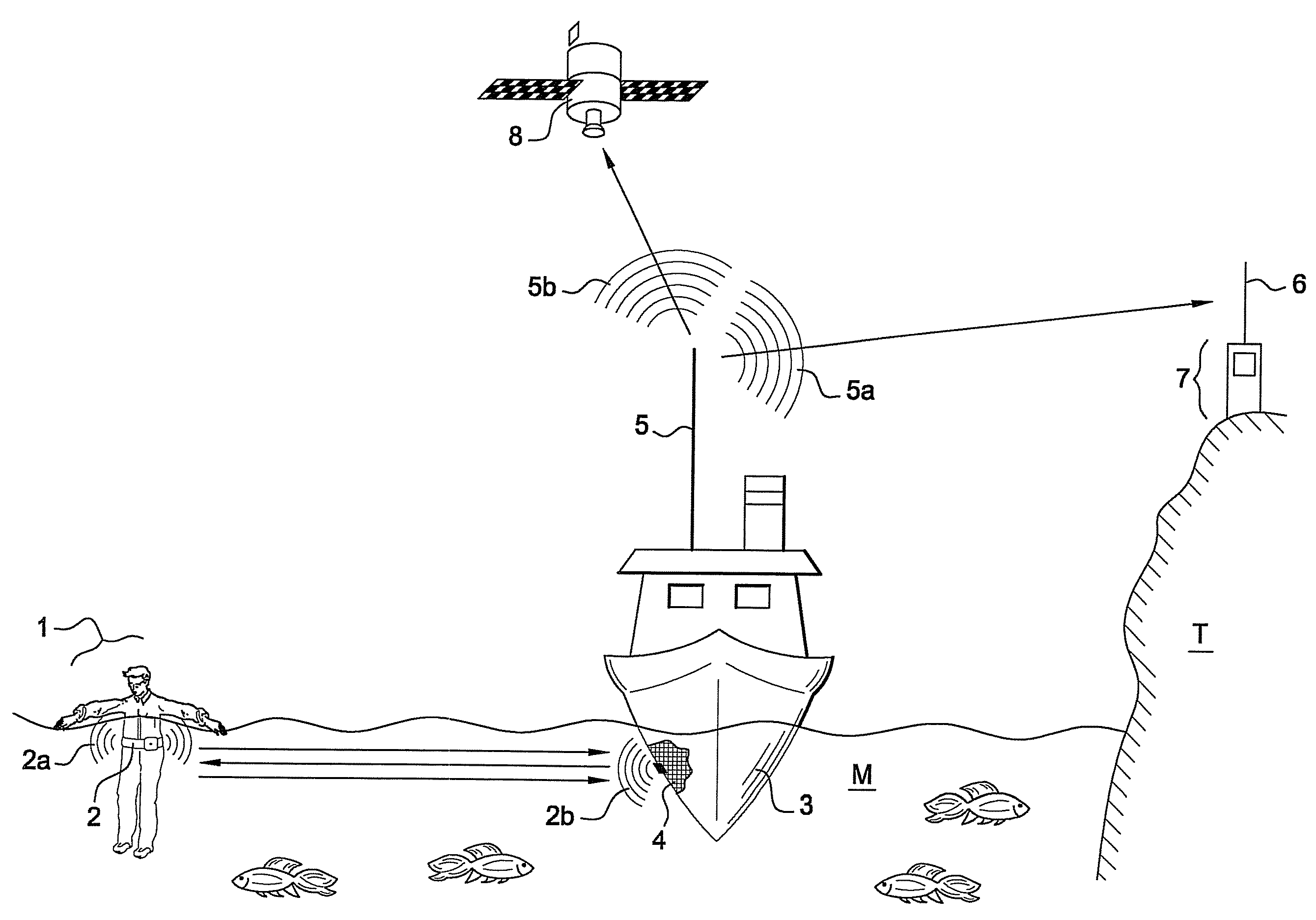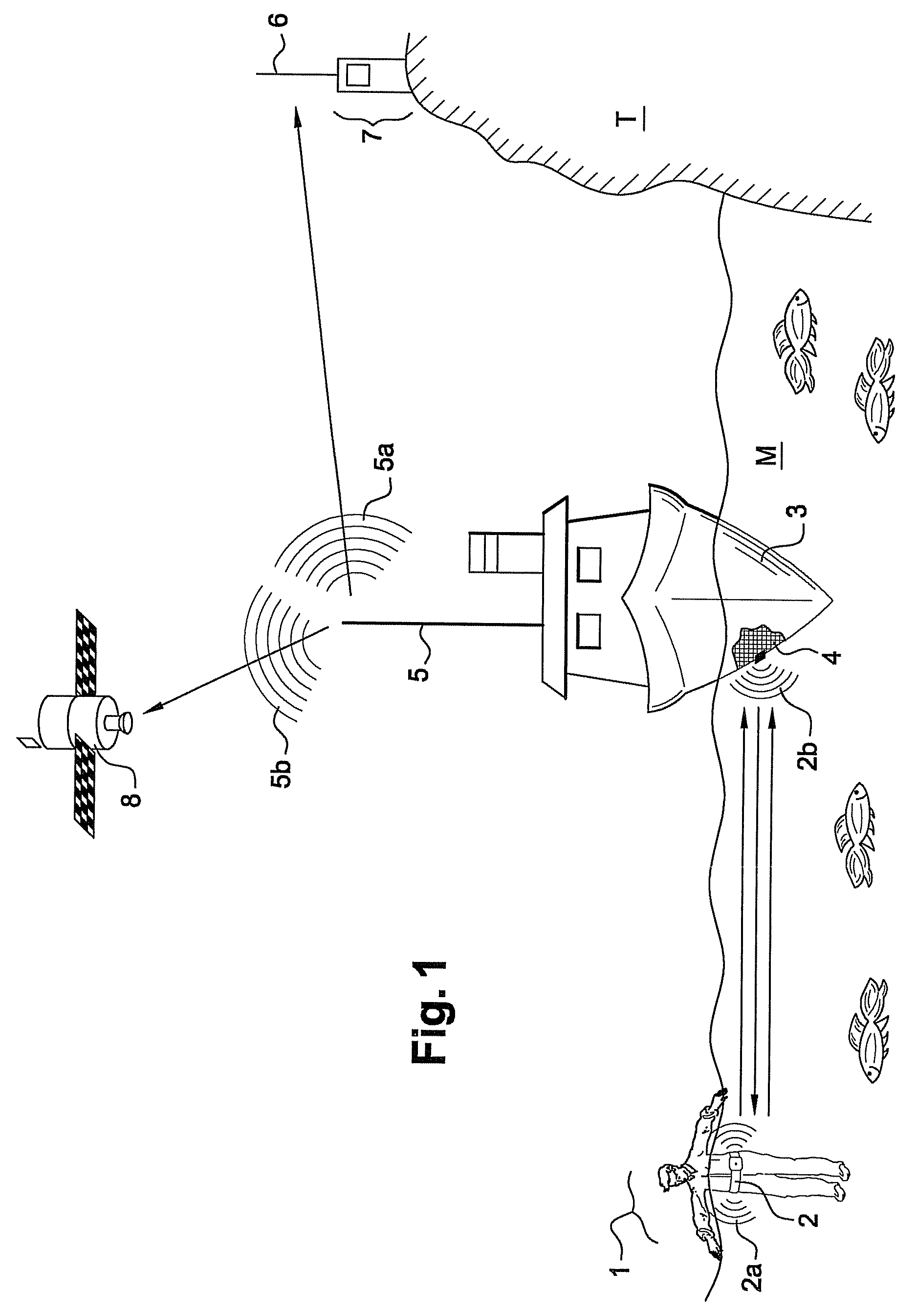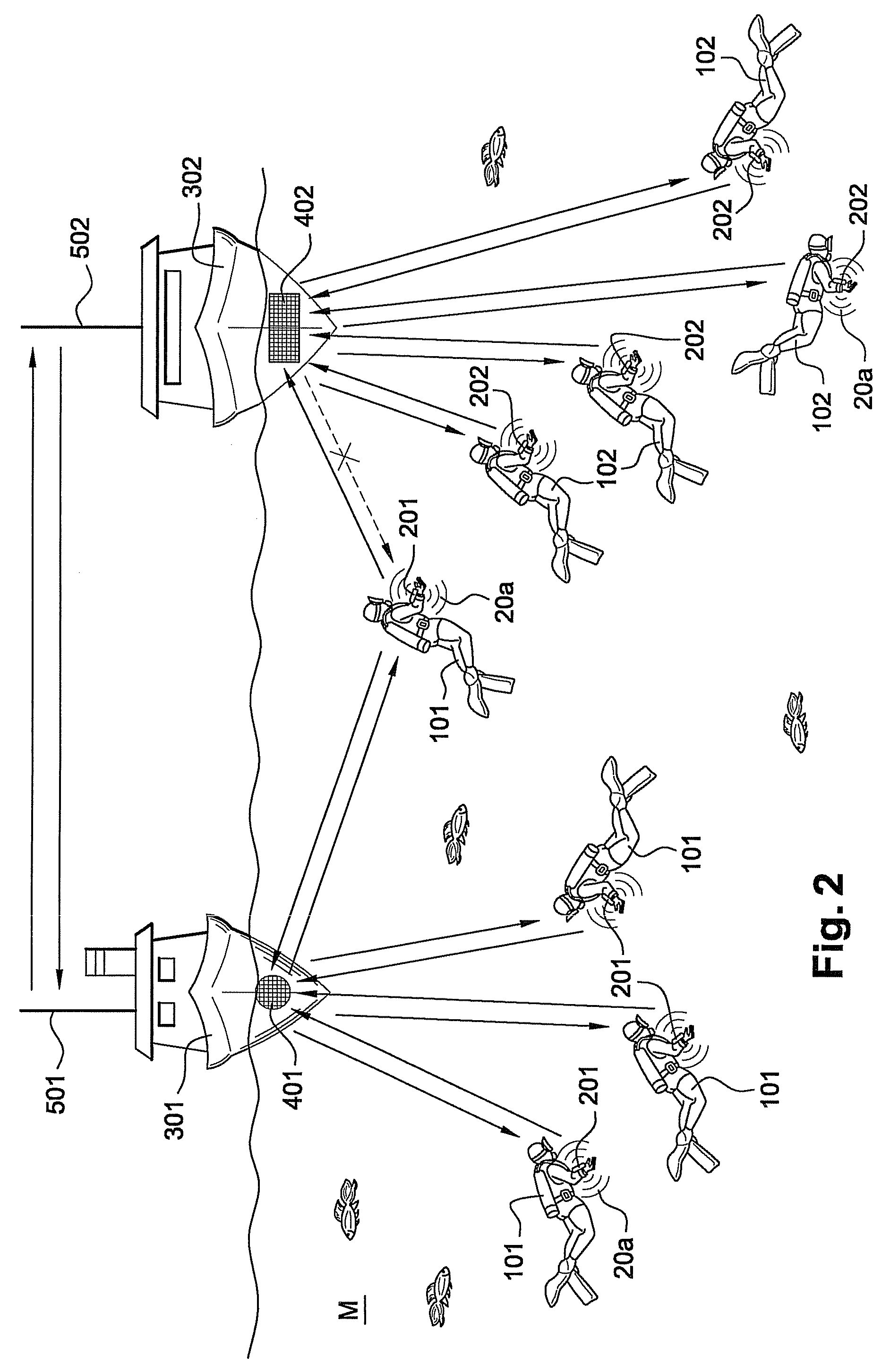Signalling and localization device for an individual in the sea and method of use thereof
a technology of localization device and sign, which is applied in the field of sign devices, can solve the problems of affecting the accuracy of localization device, so as to increase the chances of locating an isolated diver
- Summary
- Abstract
- Description
- Claims
- Application Information
AI Technical Summary
Benefits of technology
Problems solved by technology
Method used
Image
Examples
Embodiment Construction
[0068]FIG. 1 shows the use of the signalling device which is the object of the invention for rescuing a person (1) who has fallen into the sea from a ship (3). The person (1) is equipped with an individual alarm unit (2) which includes an ultrasonic wave transmitter designed to send a distress signal and enable the person to be located. This individual alarm unit (2) may be in the form of a wrist strap, a belt or be incorporated into a garment or a life jacket, thus being a non-bulky item which does not adversely affect the freedom of movement of the person wearing it in any case.
[0069]Also, individual alarm unit (2) is equipped with a watertight housing which accommodates some or all of its electrical component parts, such as a rechargeable or non-rechargeable battery in order to allow operation of said unit and, in particular, power an ultrasonic wave transmitter having a specific frequency of 30 to 60 kHz, for example. This transmitter, especially a piezoelectric transmitter, can...
PUM
 Login to View More
Login to View More Abstract
Description
Claims
Application Information
 Login to View More
Login to View More - R&D
- Intellectual Property
- Life Sciences
- Materials
- Tech Scout
- Unparalleled Data Quality
- Higher Quality Content
- 60% Fewer Hallucinations
Browse by: Latest US Patents, China's latest patents, Technical Efficacy Thesaurus, Application Domain, Technology Topic, Popular Technical Reports.
© 2025 PatSnap. All rights reserved.Legal|Privacy policy|Modern Slavery Act Transparency Statement|Sitemap|About US| Contact US: help@patsnap.com



